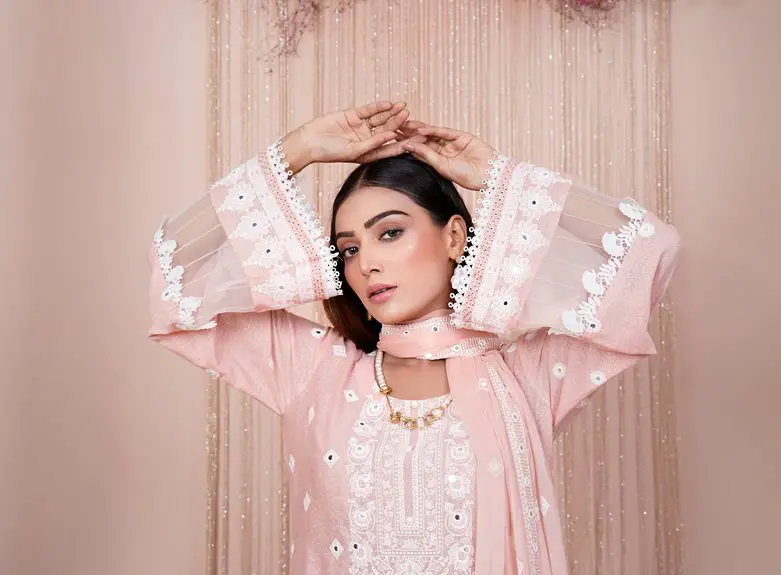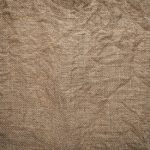You’ll love jute fabric dresses if you want style that’s eco-friendly and durable. Jute is breathable, biodegradable, and grown with minimal water and no harmful chemicals, making it a top sustainable choice. Its unique coarse texture and natural fibers give your outfit an earthy, rustic charm that stands out. Though jute can be stiff and needs special care, designers are innovating to blend comfort with style. Exploring this trend reveals how jute’s history and future shape sustainable fashion.
Table of Contents
Key Takeaways
- Jute fabric’s eco-friendly, biodegradable nature makes it a leading choice for sustainable fashion, reducing environmental impact.
- Its durable, breathable texture suits long-lasting, comfortable dresses with a unique, rustic aesthetic.
- Designers like Stella McCartney and Anavila promote jute dresses, blending sustainability with high fashion and minimalist styles.
- Traditional handloom and innovative fabric treatments overcome jute’s coarse texture and stiffness for stylish, wearable dresses.
- Jute’s low water use and pesticide-free cultivation support sustainable farming, appealing to eco-conscious consumers.
What Makes Jute Fabric Unique in Fashion
Jute fabric stands out in fashion for three key reasons: its eco-friendliness, durability, and distinctive texture.
When you wear jute, you’re choosing a material that feels robust yet lightweight, perfect for dresses that last. You’ll notice its coarse, natural weave adds a rustic charm you won’t find in synthetic fabrics.
Jute offers a lightweight, durable feel with a rustic texture unmatched by synthetic fabrics.
This unique texture not only gives your outfit character but also breathes well, keeping you comfortable. Plus, jute’s strength means your dress resists wear and tear better than many natural fibers, so it holds up through multiple wears and washes.
When you pick jute fabric dresses, you’re embracing a blend of style and practicality that’s rare in the fashion world. It truly sets your wardrobe apart.
Environmental Benefits of Choosing Jute Dresses
Because you’re opting for a dress made from natural fibers, you’re directly supporting sustainable fashion choices that reduce environmental harm. Jute is biodegradable, uses minimal water, and requires no harmful pesticides, making your dress eco-friendly from start to finish. When you wear jute, you help cut down plastic use and lower carbon emissions linked to synthetic textiles.
| Benefit | Impact on Environment | Your Role |
|---|---|---|
| Biodegradable | Reduces landfill waste | Choose jute over synthetics |
| Low water use | Conserves water resources | Support water-saving fabrics |
| No pesticides | Protects soil & wildlife | Avoid harmful chemicals |
| Carbon footprint | Lowers greenhouse gases | Reduce your carbon footprint |
| Renewable | Supports sustainable farming | Encourage eco-friendly crops |
The History and Origin of Jute as a Textile
Natural fibers have clothed civilizations for centuries, and among them, one stands out for its versatility and eco-friendliness. Jute, often called the “golden fiber,” has a rich history that dates back thousands of years. You’ll find its origins primarily in the Bengal region, now split between India and Bangladesh. This fiber quickly became essential due to its strength and affordability.
Jute, the golden fiber from Bengal, has clothed civilizations with its strength and eco-friendly nature for millennia.
Here’s what you should know about jute’s textile history:
- Cultivated since ancient times for ropes and sacks
- Became a major export during British colonial rule
- Traditionally hand-spun by rural communities
- Integral to local economies in South Asia
- Used historically in home furnishings and packaging
Understanding jute’s past helps you appreciate its growing role in sustainable fashion today.
Key Characteristics of Jute Fabric Dresses
You’ll love how jute fabric dresses show off a natural texture that feels both unique and earthy.
They’re designed to keep you cool because the material is breathable and comfortable against your skin.
Let’s explore what makes these qualities stand out in jute clothing.
Natural Texture Appeal
The unique texture of jute fabric instantly sets it apart in dressmaking. When you choose a jute fabric dress, you embrace a tactile experience that blends rustic charm with natural elegance.
This texture isn’t just about looks; it adds character and depth to your outfit. You’ll notice:
- A coarse yet appealing surface that feels distinct under your fingers
- Visible natural fibers that create an organic pattern
- Subtle irregularities giving each dress a one-of-a-kind look
- A matte finish that complements earthy and minimalist styles
- A sturdy weave that maintains shape and structure
This natural texture invites you to step away from synthetic smoothness and enjoy a fabric that tells a story of nature and craftsmanship every time you wear it.
Breathability and Comfort
Although jute fabric is often associated with durability, it also offers surprising breathability that keeps you comfortable throughout the day. When you wear a jute fabric dress, air easily circulates, preventing overheating and moisture buildup. This natural ventilation makes it ideal for warm weather or long outings. Plus, the fabric’s texture feels soft against your skin, adapting to your body’s movements without restriction.
| Feature | Benefit | Emotion Evoked |
|---|---|---|
| Breathable fibers | Keeps you cool | Relief |
| Soft texture | Gentle on skin | Comfort |
| Natural moisture wicking | Reduces sweat | Confidence |
Choosing jute means embracing a fabric that cares for your comfort and the environment.
Popular Styles and Designs Featuring Jute
You’ll find jute fabric shines in casual dress styles perfect for everyday wear.
If you want something more refined, elegant jute evening wear offers a unique, eco-friendly twist.
Plus, bohemian jute outfit designs bring a relaxed, artistic vibe you’ll love.
Casual Jute Dress Styles
When you choose casual jute dress styles, you embrace both comfort and eco-friendly fashion. These dresses offer a natural, breathable feel perfect for everyday wear.
You’ll find jute dresses in various designs that suit relaxed outings or casual office days. Popular casual jute styles include:
- Shift dresses with minimalistic cuts for easy movement
- A-line dresses that flatter all body types
- Shirt dresses with button-down fronts for a polished look
- Sleeveless or short-sleeve options ideal for warm weather
- Dresses featuring simple embroidery or patchwork for subtle detailing
These styles combine the rustic texture of jute with practical designs, making them versatile additions to your sustainable wardrobe.
You’ll enjoy how these dresses balance style, durability, and eco-consciousness effortlessly.
Elegant Jute Evening Wear
If you want to make a striking impression at evening events, elegant jute evening wear offers a unique blend of sophistication and sustainability. You’ll find jute gowns with sleek silhouettes that highlight the fabric’s natural texture while maintaining a refined look.
Designers often incorporate intricate embroidery or beadwork to elevate the jute’s rustic appeal. A-line dresses and tailored jumpsuits made from jute are popular choices, combining comfort with style.
You can also choose jute skirts paired with silk or satin tops for a balanced, elegant ensemble. The earth-toned hues of jute bring warmth and depth to your evening wardrobe.
Bohemian Jute Outfit Designs
Although jute is often associated with structured or formal wear, it also lends itself beautifully to bohemian styles that celebrate free-spirited creativity and natural textures.
When you choose bohemian jute outfit designs, you embrace earthy tones and relaxed silhouettes that feel both comfortable and stylish. You’ll find jute used in various popular styles that highlight its rustic charm and versatility.
Here are some designs you can explore:
- Flowy jute maxi skirts with fringe detailing
- Loose, embroidered jute tunics paired with natural accessories
- Jute patchwork dresses featuring mixed fabrics and patterns
- Off-shoulder jute tops with crochet accents
- Layered jute vests perfect for festival looks
These pieces let you express your individuality while staying eco-friendly.
How to Care for and Maintain Jute Clothing
A key step in keeping your jute clothing looking fresh is understanding its unique care requirements. Since jute is a natural fiber, it’s best to avoid machine washing. Instead, gently hand wash your garment in cold water with mild detergent to prevent damage.
Avoid machine washing jute; hand wash gently in cold water with mild detergent to preserve its natural fiber.
Never wring or twist jute fabric; instead, press out excess water carefully. Air dry your clothing flat in a shaded area to avoid direct sunlight, which can cause fading and brittleness.
Store jute items in cool, dry places to prevent mold or mildew. If wrinkles appear, use a low-heat iron with a cloth barrier to protect the fabric.
Following these steps helps maintain your jute clothing’s durability and natural texture, keeping your sustainable style sharp and long-lasting.
Comparing Jute With Other Sustainable Fabrics
Sustainability in fashion means choosing materials that balance environmental impact, durability, and comfort.
When you compare jute with other sustainable fabrics like organic cotton, hemp, bamboo, and linen, you’ll see each has unique benefits.
Jute stands out for its biodegradability and minimal water usage. Here’s how jute stacks up:
- Jute: Strong, biodegradable, low water needs
- Organic Cotton: Soft, breathable, requires more water
- Hemp: Durable, pest-resistant, grows quickly
- Bamboo: Soft, moisture-wicking, can involve chemical processing
- Linen: Lightweight, breathable, made from flax plants
Challenges in the Production of Jute Dresses
You’ll face challenges processing jute since its coarse fibers require special techniques to soften.
Designing dresses from jute also means balancing style with comfort, as the fabric can feel stiff against the skin.
Understanding these constraints helps you create better, wearable jute garments.
Material Processing Difficulties
Although jute offers eco-friendly benefits, processing its fibers into smooth, wearable fabric presents several challenges. You’ll find that turning coarse jute into soft material requires careful handling.
Here’s what you need to take into account:
- Removing natural gum and lignin without damaging fibers
- Dealing with the rough texture that resists easy spinning
- Ensuring consistent fiber length for uniform fabric quality
- Managing moisture content to prevent brittleness or mold
- Implementing eco-friendly retting methods to avoid pollution
These difficulties mean you’ll often face extra steps compared to cotton or synthetic fabrics.
Still, overcoming these hurdles is key to creating sustainable jute dresses that look and feel great. Understanding these processing issues helps you appreciate the complexities behind this green fashion choice.
Design and Comfort Constraints
Handling jute’s coarse texture and fiber inconsistencies doesn’t just complicate processing—it directly impacts how designers create dresses that are both stylish and comfortable.
When working with jute, you face challenges like limited flexibility and roughness, which can make the fabric feel stiff against the skin. You’ll need to carefully balance aesthetics with wearability, often blending jute with softer materials to enhance comfort without sacrificing sustainability.
Designing tailored fits or flowing silhouettes requires extra attention since jute doesn’t drape as easily as cotton or silk. You must also consider breathability and weight, as jute dresses can become heavy or hot.
Ultimately, you’ll have to innovate with patterns and fabric treatments to overcome these constraints and deliver fashionable yet comfortable jute dresses.
Influential Designers and Brands Embracing Jute
When designers and brands prioritize sustainability, jute fabric becomes a go-to material for eco-friendly fashion. You’ll notice many influential names embracing jute, transforming it into chic, wearable art.
By choosing jute, they reduce environmental impact while delivering unique textures and durability. Here are some brands and designers leading the jute movement:
- Stella McCartney integrates jute in luxury pieces, promoting eco-conscious style.
- Patagonia experiments with jute blends for sustainable outdoor wear.
- Anavila crafts minimalist jute dresses, highlighting traditional handloom techniques.
- Ecoalf uses jute to create recycled, ocean-friendly collections.
- Bode incorporates jute accents to add rustic charm to modern designs.
When you support these pioneers, you contribute to a greener fashion future.
Future Trends in Jute Fabric Fashion
As sustainability continues to shape the fashion industry, you’ll see jute fabric becoming more versatile and innovative in upcoming collections.
Designers are experimenting with blends, mixing jute with organic cotton or silk to improve comfort while maintaining eco-friendliness. You’ll notice more vibrant dyes and refined weaves, making jute dresses suitable for both casual and formal wear.
Tech advancements will enhance jute’s durability and softness, addressing past limitations. Additionally, expect a rise in zero-waste patterns and local artisan collaborations, giving you unique, ethically made pieces.
As you shop, you’ll find jute fabric not only sustainable but also stylish and functional, aligning with your values and aesthetic. The future of jute fashion is bright, offering you eco-conscious choices without compromising design.
Frequently Asked Questions
Where Can I Buy Affordable Jute Fabric Dresses Online?
You can find affordable jute fabric dresses on websites like Etsy, Amazon, and specialized eco-friendly stores. Don’t forget to check out local artisans’ shops online—they often offer unique, budget-friendly sustainable fashion options you’ll love.
Are Jute Dresses Suitable for All Seasons?
You might think jute dresses are summer-only, but they’re surprisingly versatile. You can layer them in winter or wear them solo in summer. So, yes, you can rock jute dresses all year round, no sweat!
Can Jute Fabric Be Blended With Other Materials?
Yes, you can blend jute fabric with materials like cotton or silk to enhance comfort and durability. This mix keeps jute’s eco-friendly benefits while making your clothes softer and more versatile for everyday wear.
How Does Jute Fabric Feel Against Sensitive Skin?
You might find jute fabric a bit coarse against sensitive skin since it’s naturally rough. However, blending it with softer fibers can make it more comfortable, reducing irritation while keeping its eco-friendly benefits intact.
Are Jute Dresses Available in Plus Sizes?
You’ll find some brands offering plus sizes in jute dresses, but availability varies. Since jute is eco-friendly but less stretchy, check sizing charts carefully and look for designers who prioritize inclusive, comfortable fits in sustainable fabrics.
- What Is Carded Nonwoven Fabric? - July 12, 2025
- How to Choose the Correct Nonwoven Geotextile for Drainage - July 12, 2025
- A Look at Bicomponent Fibers in Nonwoven Technology - July 12, 2025







